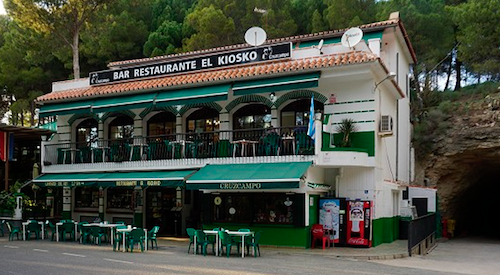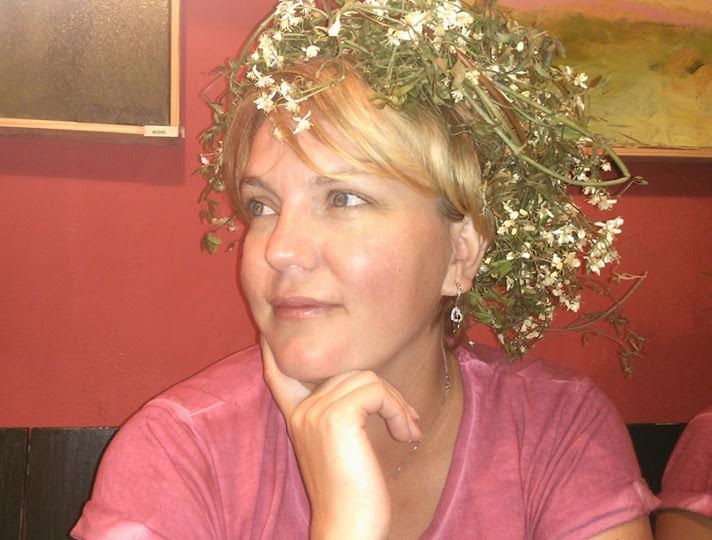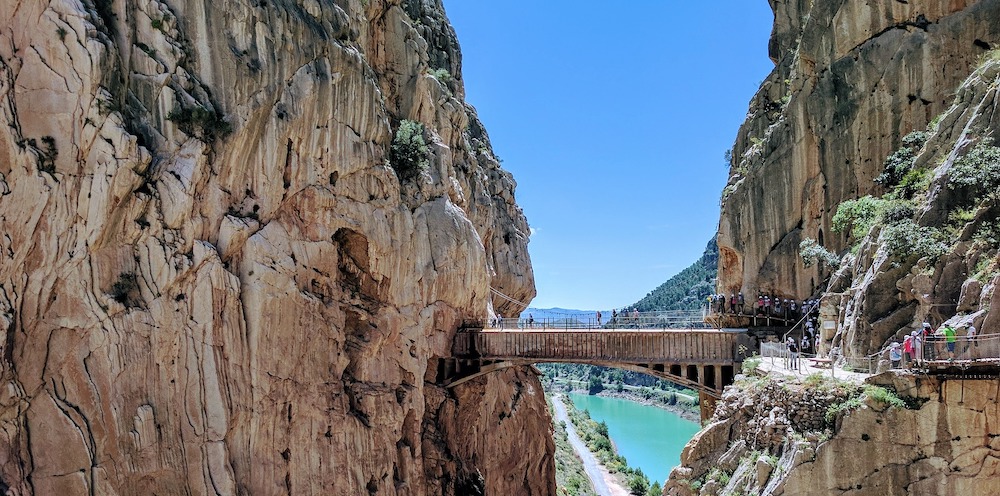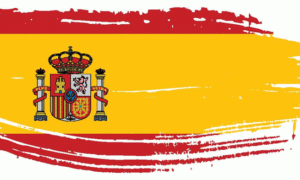(Editor’s note: Be sure to check official COVID travel restrictions here before traveling to Spain to walk the El Caminito Del Rey.)

When the question of “Why Spain?” is asked, one of the first responses you’ll hear is “the weather”, and I’d be inclined to agree. I don’t necessarily mean summer, when temperatures here in Granada regularly top 40 degrees and the only comfortable place to sleep at night is on the terrace. I’m thinking spring, autumn and yes winter. I like the fact that even in winter the earliest sunset is 6 p.m. (compared to 3:50 p.m. in Manchester). It makes a huge difference especially for those who suffer from Seasonal Affective Disorder (SAD).
Equally, there seems to be remarkably few overcast grey sky days. It’s either raining (and I mean raining!) or the sun is shining, the sky is blue and we can wander around in a pullover and warm jacket, or if you’re a British tourist shorts and t-shirt!
Okay, I hear you asking where is all this weather talk leading? Well spring, autumn and winter are the perfect times of the year if you like to put on your hiking boots and get walking. Visitors to Andalucía are spoiled for choice and one of my favourite places to visit is El Caminito Del Rey (The Kings Path) in the province of Malaga and once considered to be the most dangerous path in the world.
Closed due to deaths, then reopened

The story begins as the 19th century drew to a close and alternatives to coal were being explored, leading engineer at the time Rafael Benjumea was placed in charge of a project to produce hydropower. This project involved altering the course of the water at the entrance to Embalse de Gaitenejo via a newly built, 3-kilometer-long channel ending with a 100-meter drop into the ancient Salto Del Chorro hydropower plant. At the same time a pathway was fitted to the face of the rock to allow for maintenance work on the channel.
In 1920 the Chorro Reservoir was completed in order to guarantee electric supply throughout the whole year, including crucially during times of drought. In 1927 the Gaitenejo dam was eventually completed, controlling the water from the Guadalteba and Guadalhorce rivers.
It was on the 21st May 2021 King Alfonso XIII visited the area and walked the pathway Camino de los Balconcillo to the village El Chorro, where he bestowed upon Rafael Benjumea the title Count of Guadalhorce. This visit gave rise to the name El Caminito del Rey (The Kings Path). El Caminito del Rey is 2.9 kilometers in length. It is worth noting that you have a 2.5-kilometer walk from where you park outside of “The Kiosko” to the control building, where you are placed into groups of 15-to-20 people, given your instructions and sent on your way along El Caminito Del Rey.
The route got its reputation as the most dangerous in the world mainly due to it having fallen into a state of disrepair, with large chunks of the concrete making up the walkway having disintegrated, leaving gaps only the most adventurous people would dare attempt.
Following a number of deaths at the turn of the century, the authorities took action and closed both entrances, eventually reopening them in 2015 when a new walkway (built directly above the old walkway) was completed.
At 100 meters above the ground, the walkway still looks pretty scary. I’m no enthusiast of heights myself; however it looks far less intimidating from a position on the walkway looking down than it does from a position down below looking back up.
The boards do feel very secure (as you’d expect), and the only point at which my legs gave a wobble was as I made my way across the suspended wire bridge.
No visit would have been complete without at least attempting a photo looking down from the bridge, which was a task in itself given that the wind was causing the bridge to sway from side to side as I tried to maintain my balance whilst holding and focusing my camera.
Having reached the other side I couldn’t help but look back and I did notice that one or two people were crossing the bridge rather quickly, without at any time looking down and with a look of sheer relief once they reached the other side.
You are sent off in groups, with a gap of about 10-to-15 minutes between each group. The good news is that you’re not escorted and are allowed to make your own way, in your own time without feeling rushed.
The scenery is stunning; the photos speak for themselves. However, every now and again it’s important to look up to the skies. At one point, I saw 14 (I did count them) buzzards … at least I think that’s what they were. You will also see Egyptian Vultures, Griffon Vultures, Golden Eagles and Honey Buzzards.
Once you have exited the gorge, it’s a further 2-to-2.5 kilometers until you reach the second control building, whereupon a little farther up the road is the return bus stop (a 20-minute journey back to the Kiosk). So, in total it is a 7.5-kilometer walk.
The details and tips

If you are planning a trip, you must allow time to park your car. I visited in spring so it wasn’t particularly busy. However, I understand that by mid-day during high season, the car parks reaches capacity. As noted above, you will also need to walk the 2.5 kilometers to the entry point of the walk. Give yourself plenty of time for this because it’s a nice walk and you will not be returning along that path.
• The price of entry is 10 euros, with a minimum age of 8 years old. They do require proof of age, so don’t be tempted to school your child in the dark art of age deception. (We’ve all done it attempting to get into various theme parks!)
• Take a small backpack with plenty of water because in summer temperatures can reach well over 30 degrees and once you start there is no going back!
• There are a number of restaurants at the end of the walk in the village (El Chorro), La Garganta was recommended to us. However we took the bus back and had a bite to eat at El Kiosko. While it does look a little on the touristy side, the prices are very reasonable and the portions a good size… just what you need after a 3-hour walk.
A really enjoyable walk, not too demanding, highly recommended and at 10 euro each, a BARGAIN!

About the author:
Irina Greensitt is from the far eastern city of Khabarovsk in Russia, but lived in the United Kingdom for seven years before moving to Spain in 2014 with her husband and two young children.
Irina now runs an internet business and lists walking, travel and sailing (passing her skipper’s exam in 2016) amongst her hobbies. If you are in Granada and need direction, feel free to drop her a line. See her Facebook consulting page here.
See all of Irina’s posts here.
See more from Dispatches’ Spain archive here.














